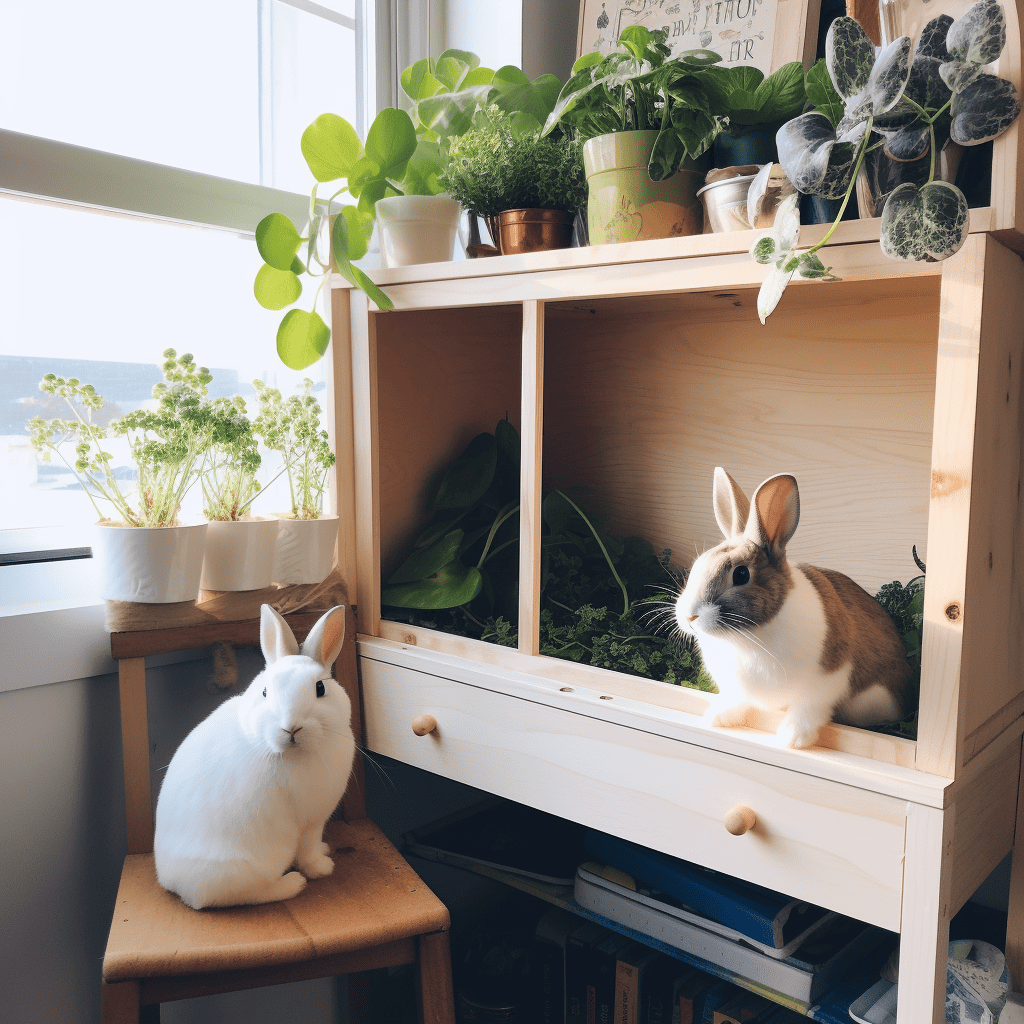Rabbits are social, intelligent, and active creatures. They require an environment that meets not only their physical needs but also provides mental stimulation and social interaction. Creating a bunny-friendly environment involves attention to safety, comfort, engagement, and accessibility. This guide explores the essential aspects of designing a space that is safe and stimulating for rabbits.
Part 1: Understanding Your Rabbit’s Needs
Natural Behavior
- Grazing: Rabbits need access to fresh hay and greens.
- Digging: Providing opportunities for digging is vital.
- Exploring and Hiding: They require spaces to explore and hide.
Sensory Needs
- Vision: Understanding a rabbit’s field of vision can help design a space that is engaging.
- Smell and Taste: Providing a variety of safe, chewable objects.
- Hearing: Consideration of noise levels is essential for their comfort.
Part 2: Designing an Indoor Rabbit Environment
Housing
- Cages and Pens: Sizing guidelines and the importance of free-roam time.
- Bedding: Selecting the right bedding for comfort and cleanliness.
Play and Exploration Areas
- Play Pens: Creating stimulating play areas with toys and obstacles.
- Hideaways: Offering hiding spots for rest and comfort.
- Chewables: Providing safe objects for chewing.
Safety Considerations
- Bunny-Proofing: Protecting both the rabbit and home from chewing damage.
- Temperature and Ventilation: Maintaining a comfortable indoor climate.
Social Interaction
- Human Interaction: Ensuring daily play and interaction with family members.
- Rabbit Companions: Considerations for housing multiple rabbits together.
Part 3: Designing an Outdoor Rabbit Environment
Housing
- Outdoor Hutches: Considerations for size, weather protection, and security.
- Free-Roaming Enclosures: Designing safe spaces for outdoor exploration.
Play and Exploration
- Outdoor Play Pens: Including tunnels, ramps, and digging areas.
- Natural Foraging Opportunities: Planting rabbit-safe greens and herbs.
Safety Considerations
- Predator Protection: Essential measures to protect from potential predators.
- Weather Considerations: Providing shelter from extreme heat, cold, and rain.
Part 4: Enrichment and Mental Stimulation
Toys and Activities
- Interactive Toys: Puzzle feeders and toys that stimulate the mind.
- Physical Exercise: Ramps, tunnels, and jumping platforms.
Social Enrichment
- Bunny Playdates: Supervised socialization with other rabbits.
- Human Interaction: Structured play and training with family members.
Part 5: Special Considerations
Special Needs Rabbits
- Mobility Challenges: Creating accessible spaces for rabbits with disabilities.
- Age-Related Considerations: Tailoring the environment for young or senior rabbits.
Conclusion
Creating a bunny-friendly environment, whether indoors or outdoors, requires a thoughtful approach that considers the natural instincts, behaviors, and sensory needs of rabbits. From selecting the right housing and creating engaging play areas to ensuring safety and providing enrichment, the goal is to create a space that not only meets the basic needs but also offers opportunities for exploration, play, and social interaction.
By embracing the principles outlined in this guide, rabbit owners can build a nurturing environment that contributes to the health, happiness, and well-being of their beloved bunny companions.
Further Reading and Resources
- Books: “House Rabbit Handbook: How to Live with an Urban Rabbit” by Marinell Harriman.
- Organizations: House Rabbit Society, Rabbit Welfare Association.
- Online Platforms: Various websites and forums dedicated to rabbit care and enrichment.
Note: Individual rabbit needs can vary widely based on breed, age, health, and personality. Always consult with a knowledgeable veterinarian or experienced rabbit caretaker to tailor your rabbit’s environment specifically to them.

